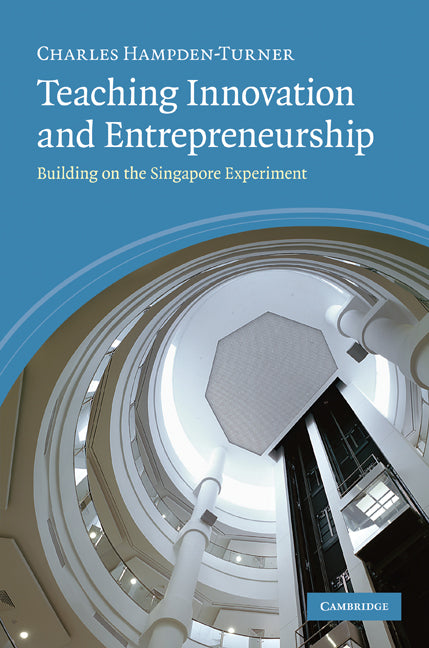Freshly Printed - allow 8 days lead
Couldn't load pickup availability
Teaching Innovation and Entrepreneurship
Building on the Singapore Experiment
This book draws on a teaching experiment at Nanyang Technological University to show how we can teach innovation and entrepreneurship.
Charles Hampden-Turner (Author)
9780521760706, Cambridge University Press
Hardback, published 29 October 2009
244 pages
23.5 x 16 x 1.9 cm, 0.53 kg
'What an inspiring and innovative book! The book provides a review of breakthrough in education innovations.' Michael Song, Charles N. Kimball MRI / Missouri Endowed Chair in Management of Technology and Innovation, Henry W. Bloch School of Business and Public Administration, University of Missouri-Kansas City
Is it possible to teach someone to be an entrepreneur? Is innovation something that can be assessed and taught in a classroom? Teaching Innovation and Entrepreneurship answers these and other questions by focusing on a teaching experiment in Singapore at Nanyang Technological University, wherein classes of English-speaking Singaporeans and Mandarin-speaking students from the People's Republic of China were subjected to an 'entrepreneurial eco-system'. Extending from the west coast of the USA to Singapore and Shanghai, this programme subjects students to a wide range of activities, including a four-month business simulation game where teams of students select their favourite inventions and pitch them to real venture capitalists with the inventors present. Drawing on the lessons learned from this highly successful experiment, the book argues that not only is it possible to describe the innovative process, we can also teach it, measure it, evaluate it and model it.
List of grids
List of dilemmas
Acknowledgements
Introduction: a headlong assault upon the inexpressible?
1. Singapore's challenge
2. The entrepreneurial ecosystem: a programme like no other
3. How can innovative pedagogies be measured?
4. Co-defining innovative education: how the instrument was created
5. The Singapore results
6. Results of the Mandarin speaking programme
7. Reconciling values: a helical model of innovative processes
8. 'It is only the Hawthorne effect'
9. The programme that cannot stand still
10. Innovation and the future of the university
11. What are the implications of being able to teach innovation?
12. Is a new creative class arising?
Bibliography
Index.
Subject Areas: Entrepreneurship [KJH], Business innovation [KJD]


